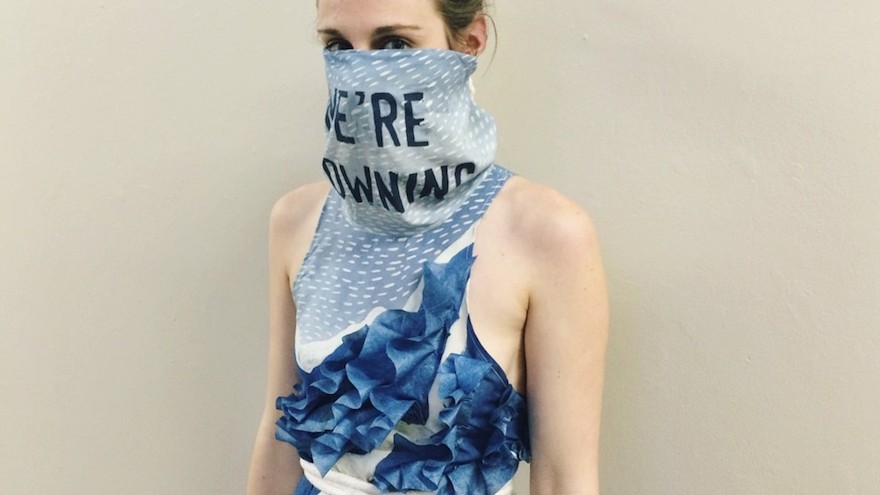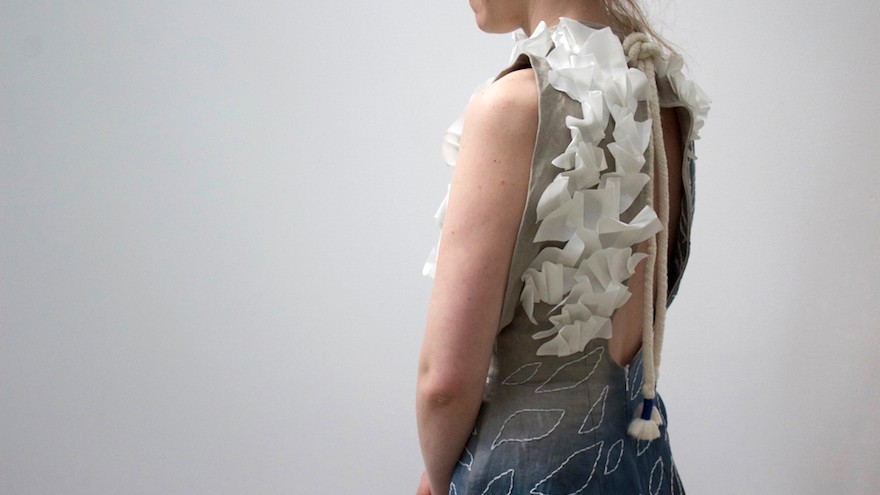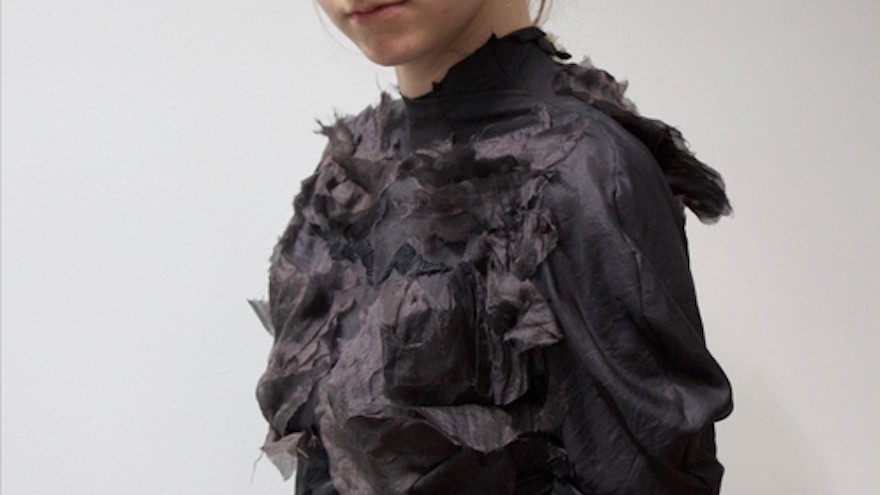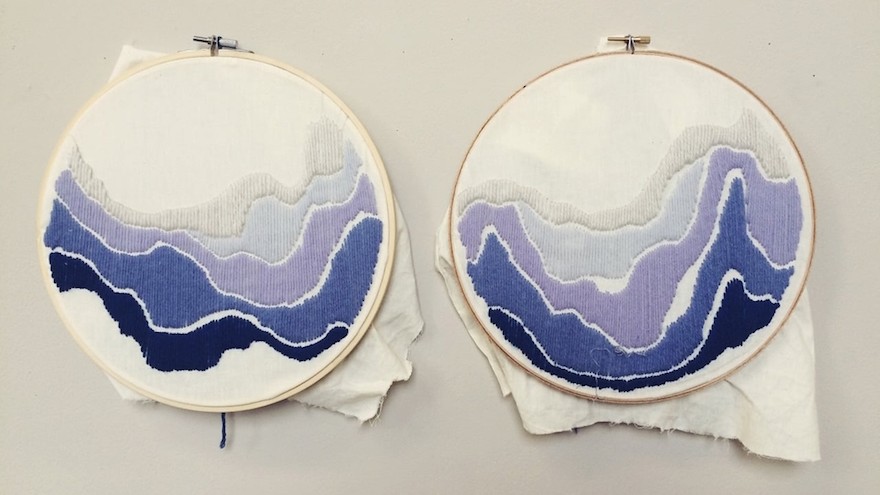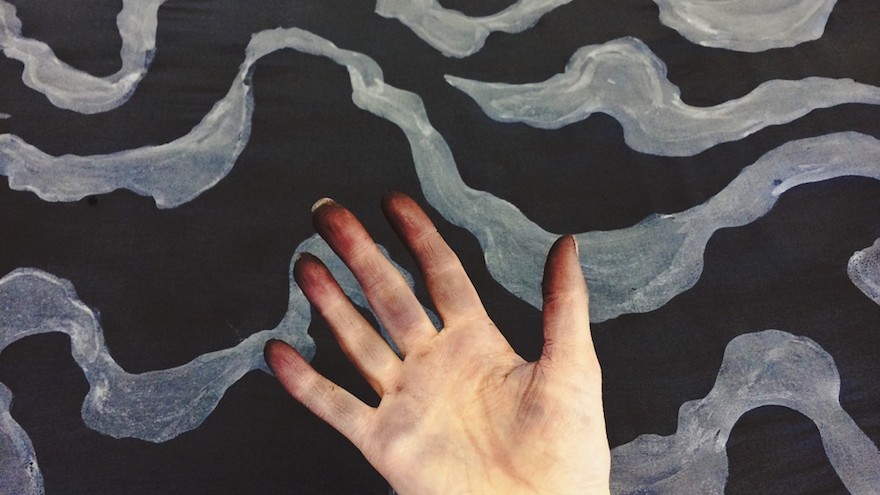Fashion designer Emelie Bergh believes that humans have engineered the destruction of the earth.
“We live in a world where greed and corruption overpowers the potential for change. Because of this knowledge, my work is strongly driven by sustainability. I want to be one small act of resistance and do what I can to help preserve the earth.”
Each of Bergh’s collections is a response to different tragedies and consists of garments with multiple layers of meaning and symbol. The pieces merge the beauty of intricate details with the harsh realities of climate change to make the viewer uncomfortable and spark conversation.
The Rising Tide collection came about after reading Climate Change: What the Science Tells Us by Charles Fletcher. In the book, Fletcher goes really into depth about the entirety of climate change and explains what is currently happening and what the predictions for the future look like. Bergh was struck by the intensity of the rising ocean and how our continental shapes will slowly be changing and wanted to use this project as a type of call to action and inform others about the future we face and the necessity of acting fast on sustainability (in all facets of life).
“The collection of garments have a much more somber feeling than my previous work because when you delve really deep into understanding climate change it comes at you like a wave and is very depressing and frightening. I wanted to show my personal feeling of helplessness and dread. Visually the garment shapes also reflect this by being overwhelming and covering parts of the face. I took inspiration from guerilla activism for the bandana-like face covering parts of many of the dresses and added text as a way to silently yell phrases like ‘we're drowning’ and ‘why aren't you listening’,” says Bergh.
The garments were displayed on models connected to cinderblocks by their ankles and surrounded by quotes and statements about the tide change in the specific area of my installation and the different ways it will come about. The goal was to create a reflection of Bergh’s own feelings of dread and a kind of realistic sense of climate change.
Bergh aims to make all of her work as sustainable as possible. For this particular collection, she focussed on natural dyes (indigo and logwood), mordants (iron and alum), and low impact acid dyes (green river mills) to create the textiles.
“I used a variety of techniques, from weaving to hand appliqué, but most the most visual is the rozome, or wax resist. I use a mix of soy and beeswax to create different levels of resists and hand paint the fabric with the dye or gently immerse the fabric in a mordant. The wave imagery was a kind of free form design that felt natural with the concept and I created it with both the wax resist as well as direct application ikat for weaving. Material wise I used different types of organic ahimsa silk, organic linen, and tencel. They were developed using minimal and zero waste patterning techniques.”

